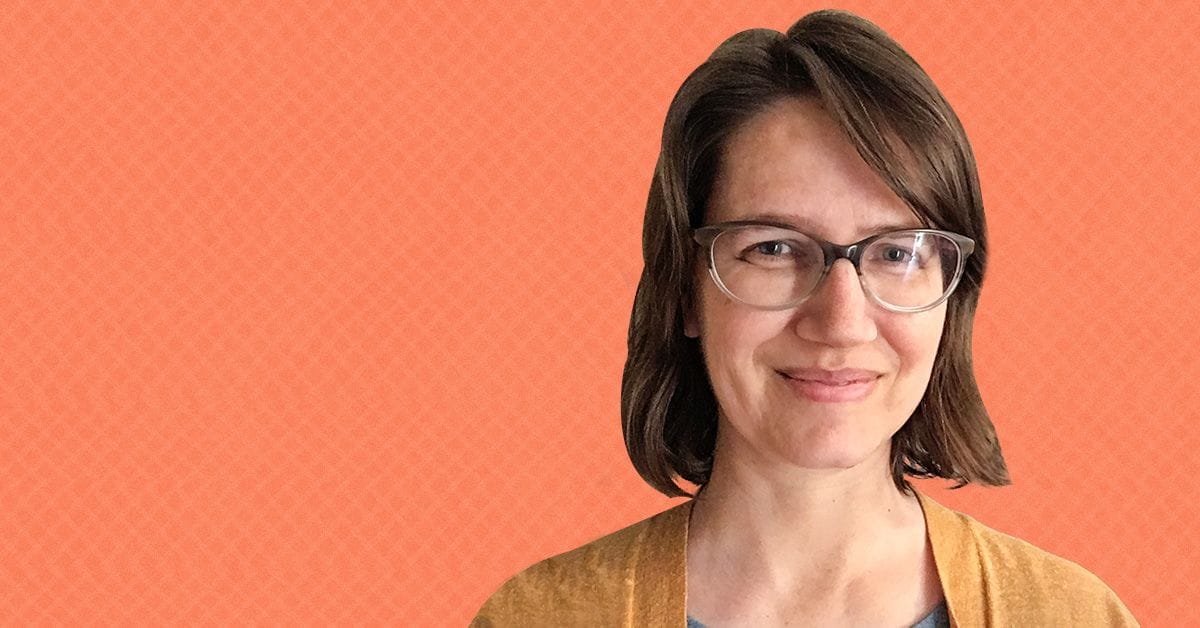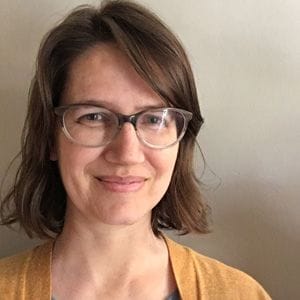In this interview, Alison shares her thoughts on the open access landscape from the perspective of library consortia, and how libraries can work together to solve common issues.

As part of an ongoing series here on ACS Axial, we’re interviewing authors and librarians from around the world to find out more about their research, their published work, and the impact that open science is having on a changing landscape of research communication. This time, we're speaking with Alison Bradley, Associate Executive Director at the Partnership for Academic Library Collaboration and Innovation (PALCI).
The highest priority to me in open access is the underlying value of true accessibility: presenting advances of knowledge, of science, of arts, in ways that are available globally and regardless of participation in privileged groups or privileged institutions.

Hello Alison—tell us about your role at PALCI.
I'm the Associate Executive Director at PALCI, the Partnership for Academic Library Collaboration and Innovation, a consortium of 79 academic and research libraries. We are regionally focused in the Northeast United States; our original membership was within Pennsylvania, and we've expanded to the surrounding States over the last fifteen to twenty years. My role is to engage with our libraries, from directors to staff, to develop programs and initiatives that suit their very differing needs.
One thing that gives PALCI a distinctive role in the consortial space is that we have such diversity in our membership; they may all be academic and research libraries, but that's where the commonalities end. Our libraries range from major research institutions down to tiny college libraries, as well as special libraries like the State Library of Pennsylvania and the Philadelphia Museum of Art. Where I think we excel is in figuring out ways that we can take collective actions that benefit our very different libraries in different but comparably valuable ways, and leveraging that diversity to explore innovative strategies.
What does a typical day look like for you?
We work in a fully remote environment, so my days are spent at my house with my laptop, mostly in Zoom meetings with individuals or groups of people. As an executive team, we spend a lot of time working on multimodal communication: making sure that if I don't catch somebody live, I can get information out to them through our various other channels. We spend a lot of time figuring out how best to solicit feedback from our libraries, talking with our vendors, and making sure that we can develop live presentations or outreach materials that will be informative but readable.
One of our credos is "save the time of the user," so I'm very mindful of the "attention budget" that colleagues across our member libraries have to spend, and making sure when I ask them a question, I have a clear idea of what I will be able to do with their answer.
What does open access mean to you?
The highest priority to me in open access is the underlying value of true accessibility: presenting advances of knowledge, of science, of arts, in ways that are available globally and regardless of participation in privileged groups or privileged institutions. In particular, I think it's essential to respect the fact that all of this work—all of this knowledge production, all of this research, in every discipline—is heavily subsidized by public investments. As a result, I feel there's an ethical obligation for those outputs to be made equally accessible to the public.
As a as a librarian of long standing, I find it a bit frustrating to look at the revenue cycle of scholarship and how it just seems to rely on the flow of money, and labor, and expertise out of educational institutions. Open access isn't necessarily the solution to that; but I do think that OA as a principle is essential for the development of an equitable and sustainable future for our industry.
PALCI entered into an ACS read and publish agreement on behalf of 52 institutions in 2023. What was the rationale?
The original motivation to work with ACS to develop a consortial agreement started from demand among our membership, who wanted to work collectively and to leverage the diversity and engagement of our community as part of a single centralized negotiation.
Individual negotiation had become a real pain point for our institutions. When I came to ACS to pitch the idea of PALCI handling this on behalf of our members, they came on board right away. We were able to present the value proposition of PALCI as a sharing network, with very diverse libraries that contribute in very different ways. The suggestion of switching from a traditional subscription agreement to a read and publish agreement was actually something that came from ACS back to us, and I was both excited and a bit surprised.
One thing that helps us be successful, but can be exhausting at times, is that PALCI doesn't do any centralized purchasing: I don't have a collections budget to spend, and everything is done on an opt-in basis where we get literal buy-in from each member on every offer we develop. Working with ACS, we were able to negotiate good terms, develop the pricing model, and then launch it to the members to see if it matched their values and expectations.
We were able to secure high enough participation among our members to go forward, and in the regular reports I get showing the publishing rates across our libraries it's been wonderful to see the impact: the high-output institutions have stayed high-output, but there's also been jumps of more articles coming out of smaller institutions. That to me says it's working, and I think that was the goal for ACS as well: to encourage smaller institutions to publish, because ACS is the society of chemists in in America. You want all of those people to have the same kind of access and engagement in a publishing sense, regardless of the size or scope of their home institution.
How have you found the experience of working with ACS to make this available across the consortium?
From my perspective, it's worked really well. I think that the reason why I've been most satisfied with this project is that ACS, the libraries, and the PALCI staff have all truly committed to being candid with each other. We know what we each need from the agreement, where risks are perceived or real and why that's the case, and generally all of us have worked together to figure out how the arrangement could be a win-win-win: how we could all come out with benefits and promote the shared goal of open science together.
There certainly have been trade-offs—there are points where individual libraries have opted out because of specific values weren’t fully met, or the inability to find the additional funding to join at a higher level—but with that candor I think we've been able to come up with a very healthy relationship, and I'm excited for next year when we'll be renegotiating.
What do you think are the biggest recent developments in open science and open access?
That's an interesting question. I don't know if what is most on my radar is necessarily the biggest development, or if it's just sort of most suited to my immediate interests, but PALCI has made a real focus and a real investment in open infrastructure in recent years, implementing community-owned software solutions. From my perspective that is a major institutional priority for us, and it highlights the ways in which interoperability and open standards within the information community are essential for actual progress.
In terms of the publishing, acquisitions, and library side of things I'm interested to see the outcomes of things like the OSTP guidance that set imminent deadlines for major changes to happen in terms of public access to science. I'm curious to see what national-level action on open science looks like in our environment; it's been great to see what has been achieved with national-level agreements in European countries, but I am curious to see what's next.
Where do you see open access in 10 years' time?
This is something that I get a little bit stuck on. I value our read and publish agreement with ACS and the other agreements that we're working on, and a decade ago we were calling this model “transformative”, but I feel that they haven't changed the environment enough. What I would hope to see in another ten years is a broader plurality of funding models that don't just look like "we always used to send the bills to the library. We'll keep sending the bills to the library and just put 'open access' at the top, and it'll be fine!..."
I would like to see more innovation in funding models, and feel that the original “transformative” models should have transformed something by now. I also worry that such agreements have not made enough movement to include a broader range of institutions. There is a realistic concern from some of our larger research libraries that the models will continue to rely solely on the funding that comes out of large research institutions. Paying the largest share within academia to support OA publishing isn’t the most concerning aspect—our large libraries value the ability to help the smaller ones engage in this space. The issue is that under an open access model where the published content becomes freely available, there's no longer a way that the commercial sector is paying their fair share. It's easier to support open access funding in order to lift access for all of academia, all of higher education, or all of science. But when there's the commercial benefit, when there are industry leaders that that used to pay a share when we were in a subscription-based environment who are now able to access the information for free, how does that get fixed? That's a sticking point, I think, for a lot of our institutions in in continuing with the models that currently exist: there are concerns that funding for higher education is stagnant at best or decreasing at worst, and even our best-funded, most well-resourced institutions have to remain conscious of how their money is spent, and how that's benefiting those who aren't paying who should be.
I would love to get a glimpse of where OA will be in 10 years' time—I'm extremely curious, because I don't think I would have guessed right 10 years ago if you'd asked me where we'd be today.
Check out the other interviews in this series:
Ian Cousins, Stockholm University
Hongxia Duan, TU Eindhoven
Vojtěch Vaněček, Institute of Physics, Czech Academy of Sciences
Louise Otting, TU Delft
Kristine Horvat, University of New Haven
David W. McCamant, University of Rochester
Fernando Sartillo Piscil, Benemérita Universidad Autónoma de Puebla
Lillian Chong, University of Pittsburgh
Sue Cardinal, University of Rochester
Rubén Mendoza-Cruz, Universidad Nacional Autónoma de México
Vesna Srot, Max Planck Institute for Solid State Research
Matt McDowell, Georgia Institute of Technology